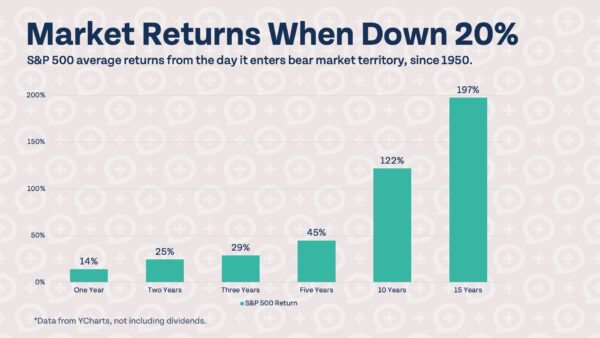After nailing down your investment goals, knowing the tax treatment of different investment accounts can help optimize your portfolio.
First, keep your goals in mind.
As Brian likes to say, “Don’t let the tax tail wag the investment dog.” It is important to think through your goals for investing before making any investment decisions. In many cases, proper risk tolerance and diversification will be a bigger factor in overall success than tax-efficiency.
One thing to think about is your timeline. When do you need these funds? Funding for goals that are long-term (10-20 years away) may allow you to take on more risk than saving for goals that are in the nearer future (3-5 years).
Another thing to consider is diversification in saving toward your goal. What type of exposure is your portfolio subject to? Are you solely invested in stocks? Do you need to introduce a fixed income component to your account to reduce volatility?
How to Optimize Retirement Saving
There are several different types of retirement accounts, or “buckets”, and they each have different rules to consider while implementing your investment strategy.
Pre-tax retirement accounts. When you think of your Traditional 401(k), 403(b), 457, IRA, etc., you are thinking about pre-tax retirement accounts. When you contribute to these accounts, your contributions are deducted from your taxable income, which means you pay less in taxes the year of making the contributions. These accounts grow tax-deferred, and are taxed as ordinary income upon distribution (and if taken early, penalties can apply). Pre-tax accounts are advantageous on the front end, but do have the highest tax burden for retirement withdrawals.
Pre-tax accounts are great for housing most investment types because you are getting tax-advantaged growth, while also avoiding extra taxes from received dividends or interest. For people building up their nest egg, this could be a great place to house indexed target date funds because they provide diversification at a low cost that would otherwise be hard to achieve. For those specializing their portfolio (think portfolios with more than $250,000), pre-tax retirement accounts are a great place for high income assets, such as bond or real estate positions.
Roth retirement accounts. Roth accounts can also be a 401(k), 403(b), 457, IRA, etc. The difference between pre-tax and Roth lies in the taxation. Unlike pre-tax, Roth contributions are taxed before they are saved. The plus side, though, is that savings grow tax-free, and is not taxed again. Because of its tax-free growth, Roth assets are considered the “apex predator” in the tax-efficiency food chain.
To optimize a Roth’s tax-free growth, and your future tax-free dollars, it is best to prioritize long-term growth in these accounts. Again, Roth IRAs can be a great home for indexed target date funds for their diversified growth, and adjusted risk exposure through time. However, specialized portfolios often hold high-risk, high-reward positions within Roths.
After-tax brokerage accounts. Brokerage assets can be a great retirement tool. Contributions and earnings are not tax-advantaged, but there are no contribution limits or maximums, and the funds are accessible at any time. Withdrawals are taxed based on the realized gain (today’s value – what you paid for it) times your capital gains tax rate. Short-term capital gains (held for a year or less) are taxed as ordinary income. Long-term capital gains (held for a year and a day or longer) are taxed at a lower rate – 0%, 15%, or 20%.
In order to keep the tax impact of a brokerage account’s taxes low, it is important to consider the income (dividends, interest, capital gains distributions, etc.) that will be produced from its investments. For this reason, depending on risk tolerance, it may be worth considering either efficient index funds or municipal bond funds for this account.
Check Out Brian & Bo’s thoughts:















